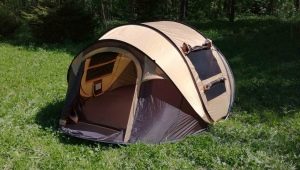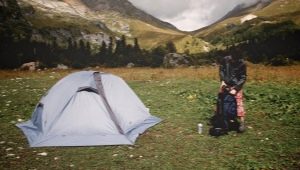How to choose a single tent?
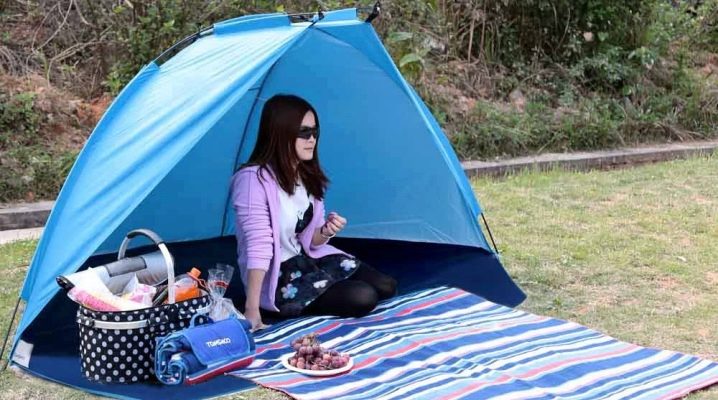
The single tent is primarily for solo hikers who don't want to invest in the somewhat more expensive double tents. At the same time, regardless of the number of people for which this or that model is designed, the tents do not lose at all in terms of workmanship. The tent will protect both one person and several from a piercing wind, lingering rain, and if properly installed, it will not be blown away by a strong wind. The difference can manifest itself only in the form factor, which will stop each individual consumer.
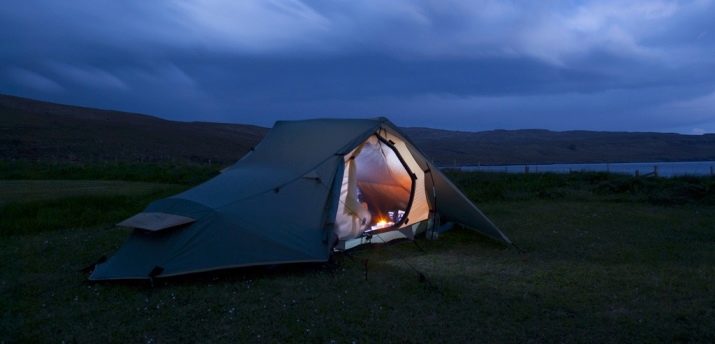
Advantages and disadvantages
First of all, single-person tents are chosen because of their low weight - half of the summer tents are actually "ultralight". The lightweight version weighs 1-1.5 kg, which allows a single hiker or hiker to easily carry it for tens of kilometers and make daily long and long transitions without interference. Even when you periodically travel with different groups of tourists, without finding permanent companions, while remaining autonomous and independent, such a tent is your choice.
Layering while maintaining the same weight - within the same few kilograms. Instead of a two-person single-layer tent, a single-person double-layer tent is preferable, suitable for the off-season, and not just summer camping. All single tents are designed for cyclists, motorcyclists, boaters and skiers due to their lightness, making them a versatile product for anyone who wants to get out into nature.
The disadvantages of a single tent include tightness and crowding, which is especially characteristic of winter tourists who may need to heat the air inside the tent when installing the stove. Fire safety is significantly reduced, because you have to sleep, almost clinging to a working stove.

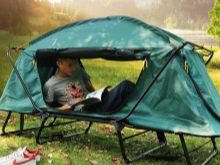
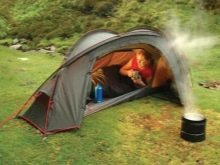
How to choose?
When choosing a tent, special attention should be paid to the characteristics of the product presented below.
Material
For arcs or frame, the most budget option is fiberglass and steel tips, coated with a layer of an alloy resistant to oxidation, or sprayed with stainless steel. Tents of the middle price range are equipped with an aluminum-based alloy frame.
The bottom of the tent can consist of both reinforced polyethylene and fabric - this is any inexpensive synthetic impregnated with water-repellent reagents that do not allow air to pass through. Any metal-plastic zipper (clasp) is used as a lock, and the tent awning is equipped with through pockets for arches. In total, there are two supporting arches for a single tent (their middles are crossed at the top), but there may be more.
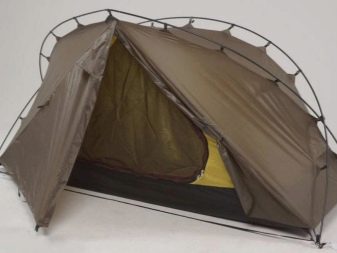

Form factor
The execution of single tents is most often standard - a hemisphere or a quarter of a sphere. The half-barrel requires additional braces, which often add additional weight to the entire product - without them, the arcs will not be stable, and the whole structure will immediately squint or fold at the slightest wind.
The most stable construction is a single cube, the main advantage of which is the ability to stand upright in a tent.But such models are not cheap (up to several times more expensive than a quarter of the sphere).

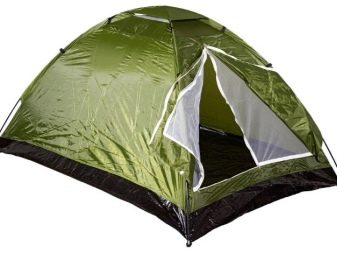
Sealing
In addition to the impermeability of the awning and the bottom, the sealing of the seams plays an important role. A tent with a one-piece, seamless canopy is a rarity, it would be more like a bag or a bag than a full-fledged mobile living space.
The cheapest option - gluing the seams with thickened tape, the adhesive substance of which is resistant to partial wetting and acids contained in rainwater in small quantities. Such a layer will pass water only after several tens or hundreds of showers.
If the seams between the walls (at the corners) are not glued, such a tent will quickly get wet from the inside even with weak, but prolonged and drizzling rains. There is no sealing for purely mountain products - it doesn’t rain high in the mountains, protection from water is useless here.
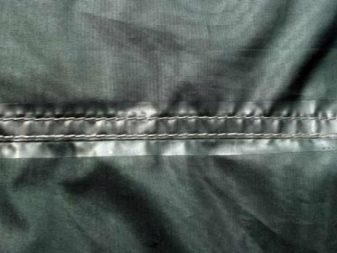
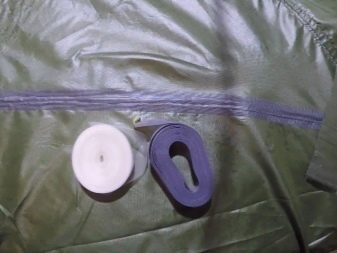
Protection of locks and nets from rain
Along the entire length of the fastener of the front door, a waterproof tight-fitting bar is installed, which does not allow even an oblique downpour to penetrate inside the tent. Mosquito nets are also stitched in a special way, and the top one is necessarily equipped with a rainproof hinged valve.
Mesh quality
The mosquito net should be fine enough to keep flies, mites, mosquitoes, bed bugs and ants out of the narrow square. The presence of damage, tears in the net significantly reduces the safety of a halt or overnight stay.

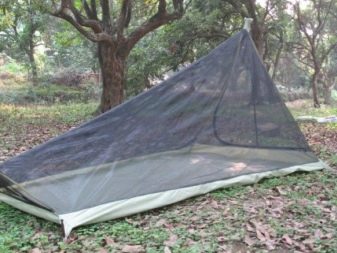
Wind and snow protection
Winter (mountain, extreme) tents have a snow and wind protection edging, which significantly improves living conditions in the field. But it requires additional fixation with pegs, stones or snow so that the wind does not protrude it.
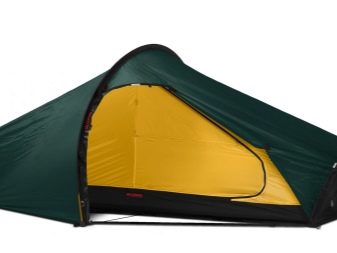

No strong plastic odor
Materials must not be highly toxic. Most cheap Chinese tents, although they meet all the basic requirements for performance, are often accompanied by significant emissions of synthetic fumes. Such a tent needs to be aired and moistened from the inside for more than one day.before these poisonous secretions are reduced so much that they are almost not felt by the tourist.
Sleeping in a tent full of plastic fumes can lead to headaches and a general feeling of being unwell in the morning. Not every person will withstand such a test - the health and characteristics of the body in people vary significantly.
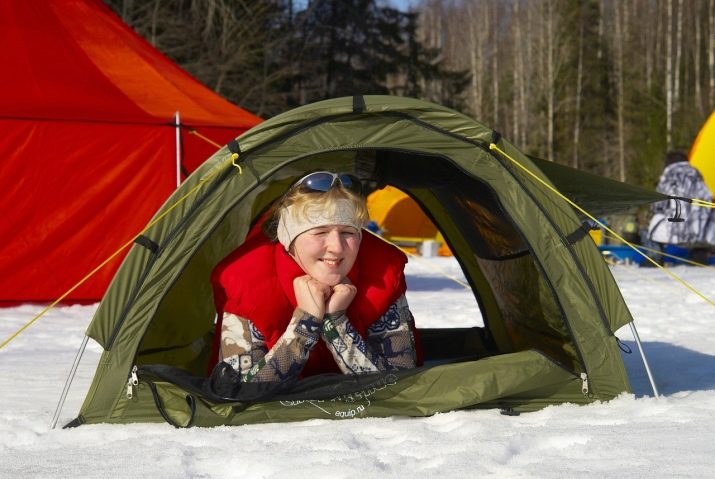
Overview of popular models
In the tourist equipment market, the following tents are common among solo travelers (in descending order of rating).
- Model Muwang 1 from Fjord Nansen - the best two-layer single tent with a mass of 1.8 kg. Exactly the same, but for two people - Muwang 2 - already with a weight of 2.3 kg. Not only the weight, but also the cost of the tent - in terms of the number of beds - differs by less than half, however, when autonomy is the main thing, and every kilogram counts, it is a single tent that will help you out.
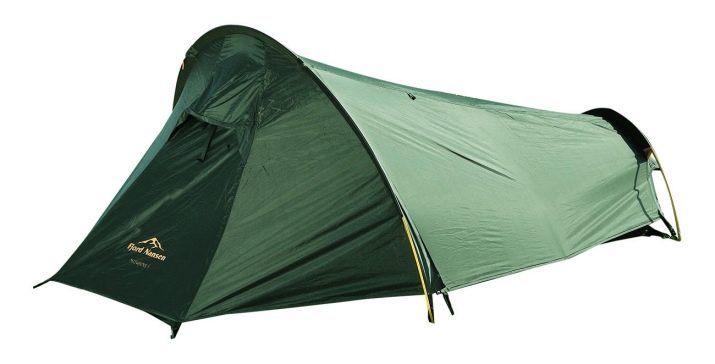
- Big Agnes Copper Spur UL1 - with a weight of only a kilogram, you will get 2 square meters of living space, with a ceiling almost a meter high. This means that it is equally comfortable to lie and sit in such a tent. The product is equipped with side doors, additional mosquito nets that allow you to easily ventilate your mobile room, to vent the moisture that has evaporated from the body of a tourist.

- M.S.R Hubba - tourist, for people of any height: the length is 218 cm. This makes it possible to place your things inside, while not being infringed in the space for a comfortable sleep.The room is equipped with a spacious vestibule, which, if necessary, is fastened to the arcs, which makes it impossible for unwanted guests to visit in order to leave something for your storage.
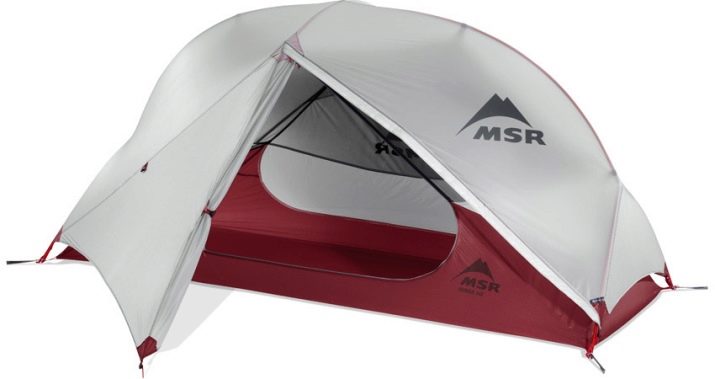
- REI Quarter Dome T1 – easy and quick installation, impermeable to puddles and snow bottom, 1.86 “square” area, allowing you to sit comfortably. A roomy vestibule, the presence of pockets and loops for storing small things inside, the ability to take with you only an awning (on a trip to the beach) with arches.

- Big Agnes Seedhouse SL1 One Person - 2 sq. meters of living space with a weight of only 940-1130 g, a ceiling height of 97 cm. This is a compact, ultra-light solution for fully mobile and autonomous tourists with purely foot activity.

- Sierra Designs Light Year 1 Person - self-folding and quick-assembly automatic design. There are only two arcs that do not have to be threaded through the pockets when setting up the tent - they are already built into the awning, which saves time. The tent is assembled to a compact block measuring 48 * 20 * 20 cm. The height of the tourist does not matter - long (more than 2 m) and a vast space of 1.86 square meters. m will allow him to spend the night in comfort. The product is not suitable for tourists who do not want to leave most of their belongings outside.
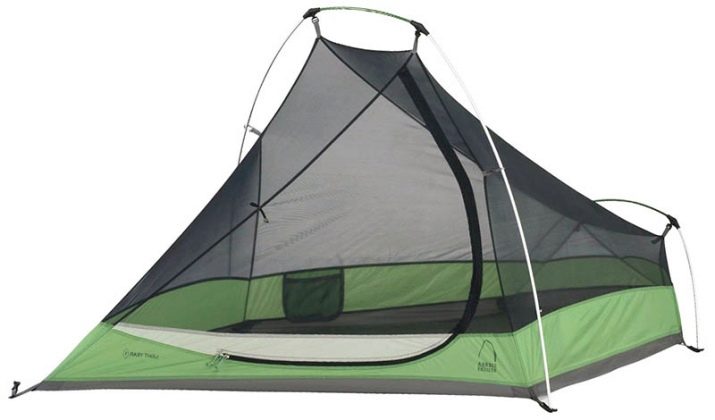
- Tramp Mountain 2 - winter two-layer "half-barrel" for mountain conditions and long hikes.
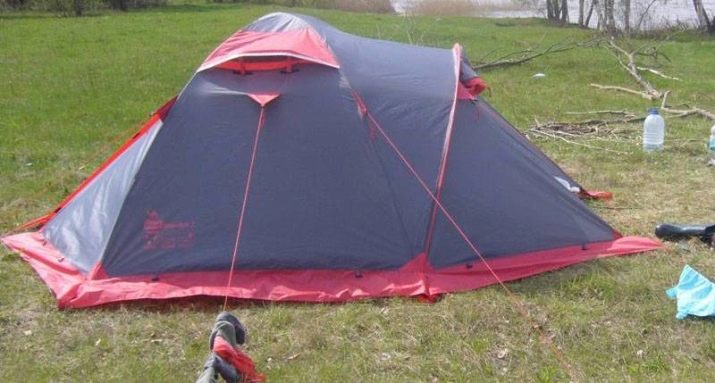
In addition to the described option, you may be interested in a few more similar models:
- Fjord Nansen Muwang 1;
- VauDe Hogan Ultralight Argon;
- Tramp Rider;
- Ferrino Lightent 1;
- Hannah Stash;
- TerraNova Solar Competition 1;
- Wild Country Aspect 1;
- Marmot Eos 1P;
- High Peak (no 1-seater - any 2-seater will do).
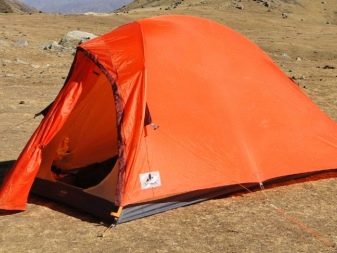
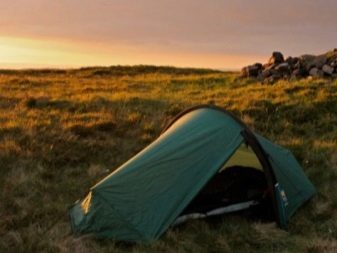

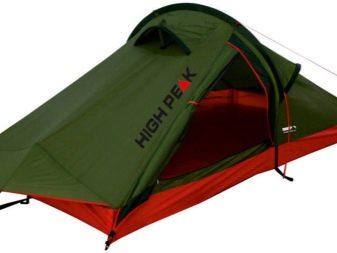
In any case, you will be generously rewarded for your choice.
How to choose a tent, see the following video.






















